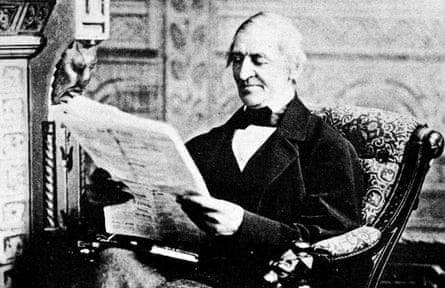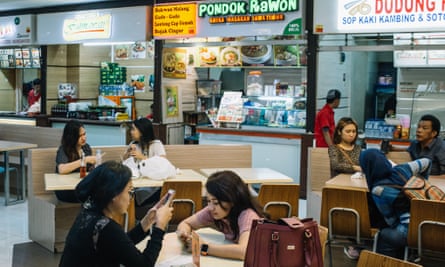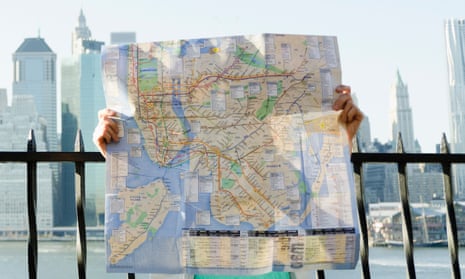There’s much to notice in the city – perhaps too much. We complain about the distracting intrusions of the devices we tote around these days, but the technologies of attention theft have defined city life for more than a century. Old-school blinding commercial signage and eye-grabbing shop windows now compete with ad-bearing screens looming over public spaces, and with clever technology that makes your phone buzz with geo-specific commercial appeals.
This can be overwhelming when you visit a new city. And it becomes numbing as you move through the one you call home.
If you want to maintain or revive your sense of really attending to city environments, a good starting point is to give yourself simple criteria: what’s going on here that nobody particularly wants me to notice? What has no campaign behind it to seize my attention?
This could mean noticing a charming architectural detail that is not flashy enough to be in a guidebook, having a spontaneous conversation with a friendly stranger or just attending to something as elemental as the sound or smell of a place.
This openness is easier when we’re in tourist mode. When visiting a new place we pay attention to everything, it seems. The ecologist Liam Heneghan invented a word for this mindset: allokataplixis, combining the Greek allo, meaning “other,” and katapliktiko, meaning “wonder.” But it is possible to recapture a bit of allokataplixis now and then even in your home city, if you make an effort to break and vary your routines.
A few suggestions to build your attention muscles in any city, new or familiar, follow. Just remember that real engagement with your environment also means noticing things that are not necessarily charming at all: security cameras, potholes, weeds, ruins, irritating strangers hollering into their phones. But sometimes these deserve attention too. Maybe you’ll notice problems that could be fixed, and have ideas about how that might happen.
Or maybe you’ll discover some other wonder where it is least expected. When you learn to recognise the beauty in ruins and weeds, or the accidental poetry of other people’s phone conversations, you’re really getting somewhere.
Actually, you were somewhere all along. But now you’re actually aware of where you are. And your attention is no longer escaping through some device or distraction that points elsewhere. It’s right there with you.
Below are five ways to notice more in your city, taken from my book, The Art of Noticing.
Look for ghosts and ruins
As part of a project overseen by William Cronon, a professor of history, geography and environmental studies at the University of Wisconsin-Madison, a group of graduate students set out to create online resources for environmental history research. Their guide, How to Read a Landscape, offers many useful suggestions for readers, explorers and researchers. My favourites involve looking for ghosts and ruins. The guide explains:
Ghost landscapes are clues left behind from the past that show what a previous landscape may have looked like and how it was altered to achieve its present state. They can be as noticeable as the remnants of an abandoned highway (eg Route 66 across the American west or stretches of Route 38 in California) or as unnoticeable as varied growth patterns in trees – which can signify recent planting or, if grown in parallel lines, traces of an abandoned road.
Ruins are similar: “the faded records of the past still apparent on the landscape”. An old out-of-service payphone, for instance, is a ruin. It says something about its own environment and surroundings. The persistence of a ruin can also be instructive. Why hasn’t someone torn that old payphone down and hauled it away? Because of its historic significance? Or simply as a function of neglect?

Nobody is making an effort to direct your attention to the ghosts or ruins in any given landscape. But if you want to understand a place more deeply, these are exactly the things you should look for.
Get there the hard way
Google Maps and its competitors are designed to ease your passage through the world, to guide you turn by turn, step by step, from wherever you are to wherever you say you want to be. As somebody from Google once put it: “No human ever has to feel lost again.”
I’m sure that Googler meant well, but I find that sentiment chilling. In fact, I’m tempted to suggest ‘“getting lost” as an explicit goal.
But if that’s too extreme, then risk the possibility of feeling lost – at least every so often. Next time you’re going somewhere new, skip the apps. Study the route in advance by looking at a map – even a digital one. You can bring a printed map along or write the directions down or simply memorise them, but make your journey without any real-time digital guidance. If the trip is a hassle, with wrong turns or false starts, that’s good.

Thinkers from Ralph Waldo Emerson to John Dewey have extolled the value of overcoming obstacles to achieve something. This is one simple way to do that.
Get there the hard way: by engaging with the world, not skimming over it.
Eat somewhere dubious
When we think about food writers and restaurant critics, we think of their haute cuisine experience and their evaluations of fancy restaurants. But the best of this lot also have an appetite for oddball out-of-the-way places in obscure neighbourhoods.
Jonathan Gold, whose food writing for the Los Angeles Times won him a Pulitzer prize, was a master of this. In a sense, his entire career was grounded in a systematic effort to pay attention to the uncelebrated.
When he was not long out of college, Gold decided he would eat at every single restaurant on Pico Boulevard, which runs from downtown LA all the way to Santa Monica. As he later explained, there was nothing obvious about this impossible odyssey. Other LA thoroughfares boasted more famous restaurants – or just better ones.
“But precisely because Pico is so unremarked, because it is left alone like old lawn furniture mouldering away in the side yard of a suburban house, it is at the centre of entry-level capitalism in central LA,” Gold wrote. The street cuts though a dizzying variety of diverse neighbourhoods, revealing multiple and overlapping visions of LA and its inhabitants. And that, he argued, made it “one of the most vital food streets in the world”.

Yes, Gold freely admitted, he endured plenty of bad meals. But he also enjoyed and discovered outstanding food he’d never even heard of. And the exercise forced him to walk into and experience an endless variety of places he would not have been drawn to otherwise. “It was the year I learned to eat,” he later wrote. And it offered him a completely new perspective on his own city.
Mimic this feat on a smaller scale by reversing the way you typically decide where to eat, whether in your home town or somewhere new. Instead of choosing the familiar chain, the internet-endorsed hot spot or the place that simply looks really interesting … choose the opposite.
That bland-looking eatery in some ugly shopping mall that has no Yelp reviews? Take in the atmosphere, ask questions about the menu, slyly observe the other patrons. Then take a few minutes to explore the nearby area. Maybe you’ll brag to your friends about the delicious food you discovered. Either way, you’ll experience a new place, for yourself.
Read the plaque
Plaques and monuments are designed for your attention – and yet they remain widely neglected. Face it: you’ve likely walked right past many more public plaques that you’ve ever paused to read.

Roman Mars, creator of the popular podcast series 99% Invisible, has made “read the plaque” a recurring mantra. As he repeatedly points out, plaques often tell fascinating stories hidden in plain sight. The website readtheplaque.com offers thousands of examples on an interactive map – one plaque in New Zealand grumpily announces that it marks the spot of a 41-year-old tree that was “felled by the bureaucracy … to make space for one more car”.
So if you spot one – and especially if it’s placed next to something that looks completely unremarkable – try Mars’s advice.
Follow the quiet
In the PBS Digital Studios series The Art Assignment, Jace Clayton (also known as DJ /rupture) offered a simple set of instructions.
Go for a walk outside, he advised, but make it a point to head out in the direction that seems the most quiet. Keep going until you find the quietest spot in your vicinity that you can. Now stop and be in that place. ‘Take a moment to absorb it,” as his instructions put it.
Clayton also suggested you document where you are and upload that documentation to social media with the tag #TheArtAssignment. That’s fine, but to me it is not required. Just make sure you really follow through on absorbing what you either hear or don’t hear.
The Art of Noticing: Rediscover What Really Matters to You by Rob Walker is published by Ebury Press (£12.99)
Follow Guardian Cities on Twitter, Facebook and Instagram to join the discussion, catch up on our best stories or sign up for our weekly newsletter

Comments (…)
Sign in or create your Guardian account to join the discussion